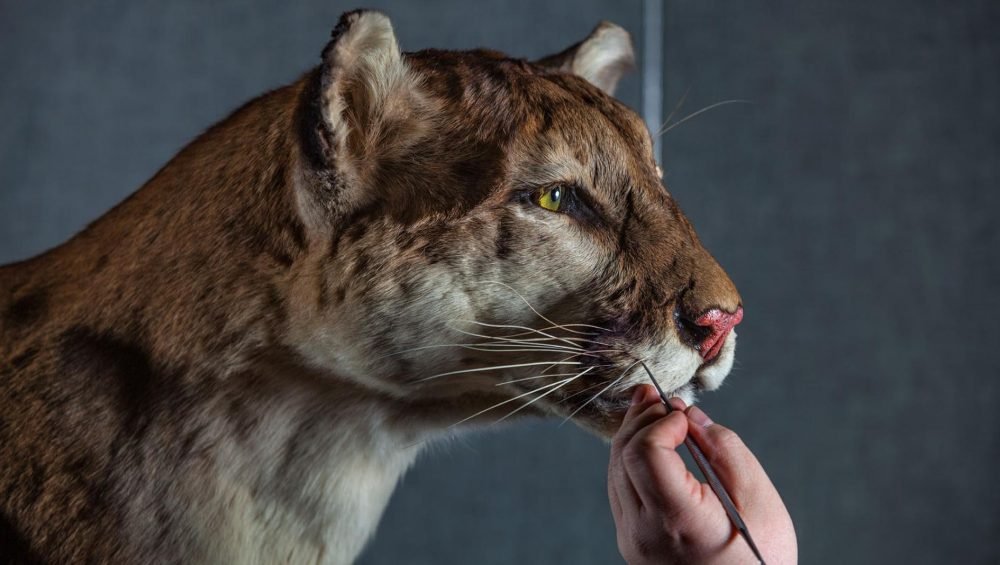Using medicine to keep something that starts to deteriorate is defined as embalming. This process aims to protect the corpse or the internal organs of the deceased by removing them. Looking at its history, it is a method known and used since Ancient Egypt. It was applied to implement and mummify religious rituals for people who died in primitive tribes.
Today, you can see that the most common embalming examples are on vertebrate animals. Therefore, this process is mostly done for the protection of wild animals and endangered animals.
So, how is embalming done? Considering this information, keeping the animals frozen if not processed immediately is recommended. We investigated for you whether embalming is possible using the freeze-dry method. How is the freeze-dried taxidermy and the effect of the freeze-drying method in this process? You can read the details below.
Animal Protection
Taxidermy is expressed as the art of stuffing animals. The art of embalming is more important, especially if the animals found dead or died during the treatment process are endangered. With embalming, animals need to appear alive and even be exhibited in museums to promote those animals.
It is stated that embalming has been done in approximately 900 animals in 20 years. It is also emphasised that embalming, which requires a lot of effort, can be done by only a few people in Turkey. It is quite interesting because it is intended to keep animals alive this way.
How is Tahnit made? First, official permission must be obtained. Then, the animal’s internal organs are removed, and a skeleton made of iron wire is placed. In this process, protective chemicals are used. However, an important point that draws attention here is how the animal to be embalmed should be protected before the procedure because embalming is a delicate process.
For the best results, the storage conditions of the animal before and after embalming are very important. What are the factors to consider for embalming the animal before stuffing a freeze-dried animal? Let’s examine it together.
- Before embalming, especially if there are traces of blood, it should be cleaned with oxygenated water. Cleaning must be completed before storage.
- If embalming cannot be done within a few hours, the animal should be kept in a cold and moisture-free environment. However, the time to embalm after removal from a conventional freezer is very important. It is recommended to wait longer.
- It should be stored in environments such as refrigerators by removing the air in the bag if there is moisture.
- The type of animal stored and the storage conditions may affect the process.
Refrigerated storage may have adverse consequences for the process. Therefore, shocking is preferred. The sublimation effect in embalming in freeze-dried taxidermy allows the animal to be stored longer.
Freeze Dry Process in Taxidermy
In the taxidermy process, the freeze-dry method holds a critical place. Initially, the product is frozen, proceeding to the subsequent step where the frozen water is sublimated by applying low pressure and temperature. This method ensures the preservation of the specimen without any deterioration due to the effective removal of water.
Besides being utilised in food preservation, the freeze-dry method finds applications in various industrial sectors. It stabilises live materials like microbial cultures, protects animal specimens in museums dry flowers, and concentrates or recovery products. The freeze-dry method is particularly invaluable in the taxidermy operation, allowing for the creating of lasting, high-quality specimens.
This approach in the taxidermy operation ensures the items on display are meticulously preserved, providing a glimpse into the natural world’s intricate beauty and diversity. Whether for educational purposes or aesthetic appreciation, this method’s enhanced longevity and quality make it indispensable in taxidermy.
The freeze dryer used for freeze-dry technology is a very specially designed product. For this reason, it is important to research and choose the product that suits your needs.
Advantages and Disadvantages of Freeze Dry Process in Taxidermy
The most emphasised issue with refrigerated or freeze-dried taxidermy is that the material must be thawed before processing. In the meantime, there is a risk of skin deterioration during the procedure. So, what are the advantages of freeze-dried taxidermy? Let’s answer for those who are wondering:
- The biggest disadvantage of freeze-dried taxidermy using traditional methods is the thawing stage. If the process cannot be started before completely dissolved, water will cause the animal to deteriorate. Prolonged waiting time also causes deterioration of the skin. The freeze-drying technology removes moisture from the product by providing a sublimation effect. This prevents the development from spoiling.
- There is no colour change or deterioration in appearance in the products using freeze-dried taxidermy. Thus, the realistic appearance of the embalmed animal is preserved.
- Humidity is one of the most effective factors in the deterioration of products. It also has a very negative effect on an animal that is planned to be embalmed. As a result of the freeze-dried taxidermy process, the risk of being affected by moisture is eliminated.
- Freeze-dry technology extends the storage life of the product.
While freeze-dried taxidermy looks quite healthy and functional, its disadvantages are also wondered. The freeze-drying method requires more energy. Long drying cycles and high energy costs can increase. However, it is a very effective method for high-quality products that must be stored for a long time.
The possibility of storing freeze-dried pets for a long time should be considered in terms of freeze-dried taxidermy. In addition, it is emphasised that the machines produced in today’s technology are also developed in energy consumption.
Animals Suitable for Freeze-Dried Taxidermy
Taxidermy is a job that takes time and effort. For this reason, the animals most suitable for this process should be embalmed. You can see images of the process for endangered wild animals. In addition to wild boar, roe deer, deer, and mountain goat, it is possible to encounter embalming birds.
Hunters who do this as a hobby also share how embalming can be done. However, which animals are suitable for frozen embalming is important for those who want to use this method. Using domestic, wild, or farm animals for freeze-dried animal stuffing is possible. The animal’s weight and the freeze-dry machine’s features are decisive. Bird species and fish may be frozen in this process and considered suitable for embalming.
Preservation of Freeze-Embalmed Animal
Protecting the embalmed animal for long-term use and preservation is of great importance. Necessary pesticides are applied, and precautions are taken to prevent it from losing its lively appearance and not losing its hair. However, care must be taken to protect freeze-dried taxidermy. We can list the things to be considered for the protection of pets, such as freeze-dried dogs or cats taxidermy or animals as follows:
- The posture of the embalmed animal should not be changed.
- Humidity should be kept at a certain level. Between 15% and 85% is considered normal.
- Sudden temperature changes should be avoided.
- The powder reduces shine. Therefore, attention should be paid to its cleanliness.
- The storage life of frozen embalmed animals is long. In addition, due to the freeze-dried taxidermy, the storage of animals in areas such as glass windows and bell jars contributes to their protection from external factors.
Therefore, one of the most important factors for protecting animals stored with freeze-dried taxidermy is using the freeze-dry machine and the timely and correct execution of the process.
You can reach our previous article from https://liyolife.com/en/what-are-food-drying-methods/






